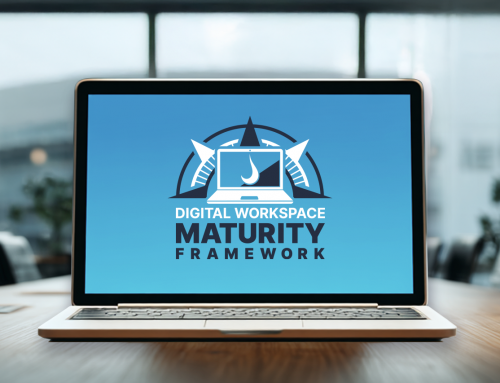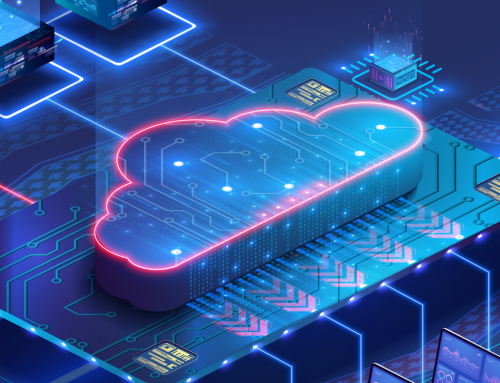Â
We’re changing our name to Liquidware!
If you are very, very lucky there comes a magical moment in every venture’s lifespan — a tipping point of sorts — when it wakes up and realizes it has come a long way from where it all began. We are so fortunate to have the people, partners, and customers to have made it to that day.
In 2009, when we launched Liquidware Labs, desktop virtualization was one of the most hyped technologies to come around in some time. Server virtualization was such a raging success that it logically followed that running desktop operating systems in the data center (VDI) must be a great idea too. The truth was that VDI, as it was called, really did not deliver as expected.  Those dabbling with the tech in the beginning discovered that desktop virtualization is a lot more complex, and needs a lot more insight and expertise to deploy, than server virtualization. It was like comparing apples and pickup trucks – NO SIMILARITY WHATSOEVER.
However, in last decade, we have collectively learned a great deal, including the most effective architectures to deploy, what kind of infrastructures to build and what kind of issues can arise.  We also figured out how to select use cases and users. As a result, desktop virtualization has come out of the experimental phase and is now solidly mainstream. Pretty much every sizeable organization has embarked on virtualizing some portion of their desktops, users, and or applications to make them more manageable and secure.
Along with the industry, Liquidware has also grown and matured as a company. So, we feel it is the perfect time to drop the “Labs” in our name to signal we have moved beyond experimentation. Today, we offer battle tested, customer proven, and market mature software that has become standard in desktop environments. The largest companies, organizations, and agencies in the world run Liquidware. How cool is that?!
Liquidware – a recognized leader in Windows Desktop Management
To know that every working day thousands of companies and millions of users are made more productive because of Liquidware, right alongside mammoth platforms like Citrix, Amazon, and VMware, is stunning. By offering a complete desktop management suite that includes user environment management, application layering and desktop monitoring across physical, virtual, and cloud desktops we have rivaled the largest offerings in the world. What truly separates us from the rest is that we listen to our customers and partners, by continuously innovating. Evolving our name was the logical next step.
Liquidware celebrates the fluidity of our offerings which seamlessly support all leading desktop platforms, whether on-premises, physical or virtual, or in the cloud.  This fluidity is a highly important consideration as we are certain that desktop environments will grow increasingly heterogeneous, encompassing numerous Windows OSes, on-premises desktops both physical and virtual, DaaS and other cloud approaches. One thing to make sure today is that you future-proof your tomorrow.
As part of the renaming, we are also launching a ‘refresh’ of the corporate look and feel with a new logo and website design because we want to demonstrate our maturity and professionalism in this industry.  I think it is safe to say that the Liquidware team and our partners have an unrivaled grasp of desktop virtualization – more so than any other company.  We are focused 100% on this technology. Our products take unique approaches to solving long-standing challenges of managing desktops. If it’s a Windows desktop, we know how to make it better.
A New Name, but Keeping the Same Focus on Quality and Innovation
From the beginning, we have focused on creating and perfecting a comprehensive desktop management suite that would allow you to manage the infrastructure, the users and applications.  We launched the company with our Stratusphere products that provide detailed desktop metrics so that organizations could move from physical desktops to virtual smoothly. They could design the target platform with solid, accurate information rather than estimates. In time, Stratusphere has become even more important in production, so that organizations not only prevent problems, but optimize and manage as needs changed. If one thing is certain, it’s to expect the unexpected when it comes to end users and millions are now more productive today thanks to Stratusphere.
They say the leap to virtualization is not a far one, but it’s a long way down (translation: don’t get it wrong or your users will scream). ProfileUnity was the next release from Liquidware to handle the migration of users from physical to virtual (or cloud) desktops and now it is the preeminent User Environment Management solution on the market. Sure, the major platforms have added low cost bidder software to check a box. However, nothing compares to the simple, secure, and agile features of ProfileUnity.
Not to rest on our laurels, we then launched FlexApp as that was the final piece of the desktop management puzzle. By decoupling applications from the devices and delivering them back on demand, you achieve unprecedented control over your application lifecycle management, bringing more users into scope for projects by being able to say YES to their applications.
This growth has in fact led to our solutions being increasingly used by larger mid-enterprise to enterprise organizations who depend on our advanced features, scalability and universal applicability in desktop environments.  The larger organizations are also looking to leverage cloud-based platforms to support some segment of their desktop operations so, because of market-driven demands, we also will be putting much more focus on making our solutions “cloud ready.”
Pushing past VDI and RDSH to Desktops in the Cloud
When we are looking at the future, we see Clouds. This approach will be a more critical part of desktop virtualization strategies of large enterprise organizations in the coming years. Why? In a nutshell: security.  Desktops are points of vulnerability because hackers can exploit security holes in applications or manipulate users into giving them access.  The more you decouple users and applications from the actual devices people use, and the more IT infrastructure you can park in vault-like hosted environments behind firewalls, encryption and other security measures, the better off you are.
So again, this brings us back to our strategy of decoupling users and applications from the devices, keeping them in centralized storage and serving them up only as needed.  Obviously, the more you abstract and virtualize, the more you need a monitoring solution so that you can stay on top of what workloads are where and how all components of the stack are working.  In fact, if you turn to a public cloud option, such as Amazon Web Services, Microsoft Azure and Google Cloud Platform, it becomes even more important to have a solution such as Stratusphere to track and monitor performance of your infrastructure.
We are Liquidware
In summary, we are the right company, with the right products, at the right time, at a critical juncture for desktop technology.   When we look back at the past, we can see that our vision – which commenced in 2009 – is even more appropriate and relevant today than it was nearly 8 years ago.  We are coming into a future where desktops must be managed and strictly controlled yet still offer the flexibility needed to spur workforce productivity. And at every organization pursuing this objective, Liquidware will be there.
Lots of companies make lots of promises. Let me make you ONE. If you deploy our solutions, I promise your users and therefore your business will become more productive and if you see gaps, we will endeavor to fill them. We hope to become – or remain – your desktop management and desktop transformation provider for all time.
Thank you all.
T.Rex
May 2017









[…] Read the entire article here, We’re changing our name to Liquidware! | Liquidware Blog […]